Biomedical research without boundaries
Institutional Communication Service
In autumn 2021 a new Centre for biomedical reseach will be inaugurated in Bellinzona. To support this event, Ticino Management features a special series of articles presenting the activities of the two main residents of the facility, IRB and IOR
[courtesy of Ticino Management, April 2021 issue].
Today we know how important scientific research is for economic and social growth, especially in times where innovation is supported by tens of billions of investments by governments and enterprises - funds which are increasingly invested in the wide-ranging and hybrid biomedical sector, driven today by Pharma and BioTech. The race for vaccines triggered by the pandemic confirms the importance of this sector. The Institute for Research in Biomedicine (IRB, affiliated to USI) in Bellinzona, is a key player in this field, having developed a new-generation bispecific antibody with promising therapeutic prospects both in the prevention and in the treatment of infected patients. A goal achieved in just a few months, despite the resources certainly not comparable to those available by large pharmaceutical firms. A proof of the value achieved by a research institute that in just over twenty years has succeeded in establishing itself internationally for the quality and results of its activities in the field of immunology and cell biology, with particular attention to the mechanisms of host defense against infectious agents and to those at the base of inflammatory and degenerative diseases, later pursuing research also the sectors of DNA repair and quality control in the production of proteins. The research performed in Bellinzona finds confirmation in the over 700 articles published in leading scientfic journals, as well as the ability to fully cover the costs of research - 8.3 million Swiss francs in 2019 - with competitive funding.
In the autumn of 2021, IRB and IOR will inaugurate their new, futuristic headquarters in Bellinzona: a 60 million franc investment in a facility with state-of-the-art laboratories, from which the entire life sciences sector in Ticino will benefit, as it will mark the birth of a center of competence which, under the same roof, will also host other centers of excellence now scattered throughout the region.
The series of feature articles produced by Ticino Management will present the activities of the two flagship institutes of research "made in Ticino", with particular attention to transversal areas to understand their impact, in terms of contribution to the scientific community, but also in terms of economic spin-offs for the Canton in terms of salaries, taxes, mandates, and financing of projects that tap into public tenders and private supporters. A first, clear evidence of this is shown by the international network in which the IRB and IOR operate, with their prestigious collaborations in Europe, North and South America, as well as with the federal polytechnic schools in Switzerland and the academic institutes in Ticino. The international flair of the IRB and IOR is also the feature of the researchers who operate in the laboratories, as well as of the students who come here from all over the world do their PhD. It is precisely this diversity that is fundamental to stimulate intellectual creativity, compare and exchange perspectives, foster critical thinking, and tackle isues by combining different approaches - for the benefit of competitiveness and quality. On average, 72% of the researchers at the two institutes come from abroad, from all over the globe: 86 out of 129 at the IRB, and 54 out of 66 at the IOR. In this first feature article we give a voice to four young researchers who have chosen one of the two institutes in Bellinzona as a fundamental step to start their careers. In addition to a young researcher from Ticino who, after having studied at the ETH in Zurich, and despite having excellent prospects there, wanted to return to his native Bellinzona, we find out more about an American and two doctoral candidates from Asian countries, which, not by chance, are the ones that in recent years have been increasing their investments in scientific research, especially basic research, and in technological development: an average of 7% per year for China compared to 3% for the United States, which should become the absolute leader in R&D spending by 2024. Hence the interest in raising a new generation of researchers trained in the best institutes in the world.
Continue reading the article (in Italian) here (pages 56-59):
https://en.calameo.com/read/004279913b7c7017b061a




